
Double Fine Productions, Inc. is an American first-party video game developer of Xbox Game Studios based in San Francisco, California. Founded in July 2000 by Tim Schafer shortly after his departure from LucasArts, Double Fine's first two games – Psychonauts and Brütal Legend – underperformed publishers' expectations despite critical praise. The future of the company was assured when Schafer turned to several in-house prototypes built during a two-week period known as "Amnesia Fortnight" to expand as smaller titles, all of which were licensed through publishers and met with commercial success. Schafer has since repeated these Amnesia Fortnights, using fan-voting mechanics, to help select and build smaller titles. Double Fine is also credited with driving interest in crowdfunding in video games, having been able to raise more than US$3 million for the development of Broken Age, at the time one of the largest projects funded by Kickstarter, and more than US$3 million for the development of Psychonauts 2.

Castle Crashers is a 2D side-scrolling hack-and-slash video game developed by The Behemoth. The Xbox 360 version was released on August 27, 2008, via Xbox Live Arcade as part of the Xbox Live Summer of Arcade. The PlayStation 3 version was released in North America on August 31, 2010, and November 3, 2010, in Europe via the PlayStation Network. A Microsoft Windows version, exclusive to Steam, was released on September 26, 2012. The game is set in a fictional medieval universe in which a dark wizard steals a mystical crystal and captures four princesses. Four knights are charged by the king to rescue the princesses, recover the crystal, and bring the wizard to justice. The game includes music created by members of Newgrounds.

Soulcalibur IV is the fifth installment in the Soulcalibur series of fighting games, released for the PlayStation 3 and Xbox 360 in 2008. It features greatly improved graphics over the previous title, and includes three guest characters from the Star Wars franchise as playable fighters. This was the first Soulcalibur game not to receive an arcade version, and the last Soul series’ 1590 A.D. trilogy game, following II and III. A spin-off for the PlayStation Portable, Soulcalibur: Broken Destiny, was released in 2009.
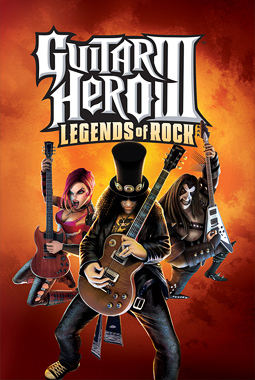
Guitar Hero III: Legends of Rock is a music rhythm video game developed by Neversoft and published by Activision. It is the third main installment in the Guitar Hero series, following Guitar Hero II. It is the first game in the series to be developed by Neversoft after Activision's acquisition of RedOctane and MTV Games' purchase of Harmonix, the previous development studio for the series. The game was released worldwide for the PlayStation 2, PlayStation 3, Wii and Xbox 360 in October 2007, with Budcat Creations assisting Neversoft on developing the PlayStation 2 port and Vicarious Visions solely developing on the Wii port respectively. Aspyr published the Microsoft Windows and Mac OS X versions of the game, releasing them later in 2007.

Lego Indiana Jones: The Original Adventures is a Lego-themed action-adventure video game developed by Traveller's Tales and published by LucasArts. The game allows players to recreate moments from the first three Indiana Jones films: Raiders of the Lost Ark (1981), Indiana Jones and the Temple of Doom (1984), and Indiana Jones and the Last Crusade (1989). It features the same cooperative play mode as seen in the Lego Star Wars video games, although it is restricted to local console play. The game was released on 3 June 2008 in the United States and Canada and 6 June in Europe. This game is based on the Lego Indiana Jones toy line. The Mac OS X version of the game was released on 4 December by Feral Interactive.
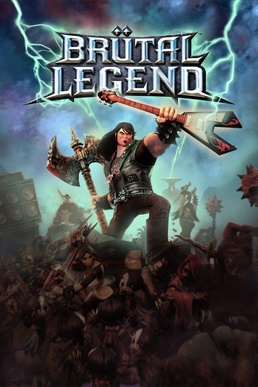
Brütal Legend is an action-adventure video game with real-time strategy game elements created by Double Fine and published by Electronic Arts for the PlayStation 3 and Xbox 360. The game was released during October 2009 in North America, Europe, and Australia. Though Brütal Legend was originally to be published by Vivendi Games prior to its merger with Activision, Activision dropped the game from its portfolio after the merger. It was later picked up by Electronic Arts, though Activision and Double Fine brought counter-lawsuits against each other over publishing issues. The issues were settled out of court. Later, Double Fine announced a port of the game for Microsoft Windows via Steam, which was released in February 2013. Mac OS X and Linux versions of the game were made available as part of the Humble Bundle in May 2013. A physical collector's edition for Windows, Mac OS X, and Linux was released by IndieBox in October 2014.

Guitar Hero 5 is a 2009 music rhythm video game developed by Neversoft and published by Activision. It is the fifth main installment in the Guitar Hero series. The game was released internationally in September 2009 for the PlayStation 2, PlayStation 3, Wii and Xbox 360 consoles. Similar to the preceding title, Guitar Hero World Tour, Guitar Hero 5 is geared towards playing in a four-person band experience, including lead and bass guitar, drums, and vocals. The game is available as a standalone title, allowing players to use existing compatible instrument controllers, and as a bundle that provides these controllers. Guitar Hero 5 adds several new features, such as drop-in/drop-out play, bands composed of any combination of available instruments, a Rockfest competitive mode consisting of several various scoring mechanisms, and both song-specific and general Challenges to unlock new avatars, clothing, and other extras in the game. Many of these changes were added to make the game a more social experience, allowing players across a range of skill levels to be able to play cooperatively and competitively against each other both locally and online. The PlayStation 2 version is based on Guitar Hero World Tour, using the same gameplay UI as Guitar Hero: Metallica, Guitar Hero: Smash Hits and Guitar Hero: Van Halen, albeit with a different Rock Meter design.
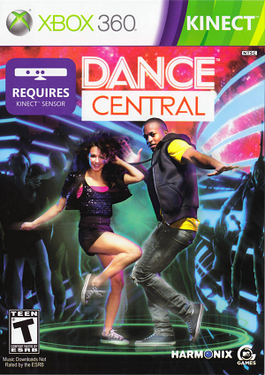
Dance Central is a music rhythm game for the Xbox 360 Kinect that was released in November 4, 2010 in most areas and in June 2, 2011 in Japan. It is the first installment in the Dance Central series.

Sonic Free Riders is a motion controlled racing video game developed by Sonic Team and published by Sega for the Xbox 360. The game requires the use of Microsoft's Kinect peripheral and was a Kinect launch title in November 2010.
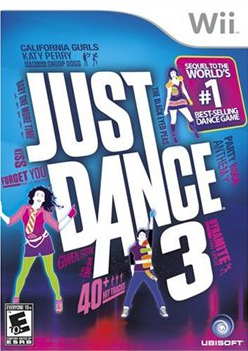
Just Dance 3 is a 2011 dance rhythm game released on the Wii, Xbox 360, and PlayStation 3 with Kinect and Move support respectively for the latter two. It is part of the Just Dance video game series published by Ubisoft originally on the Wii and the third main installment of the series. Just Dance 3 was announced shortly after the release of Just Dance 2 and was released for the Wii and Xbox 360 on October 7, 2011 in North America and October 11, 2011 in Australia and Europe and for the PlayStation 3 on December 6, 2011 in North America, December 8, 2011 in Australia and December 9, 2011 in Europe. Just Dance 3 received positive reviews from critics and is the best-selling third-party Wii game of all-time, with sales of 9.92 million.

Costume Quest is a party-based role-playing video game developed by Double Fine Productions and published by THQ on October 20, 2010. In the game, the player controls a child who is trick-or-treating with their twin on Halloween night when they encounter a monster that kidnaps their sibling. The player must travel around the local neighborhood collecting items for their costume, candy, and fellow children as companions in order to face the leader of the monsters and rescue their sibling. The costume aspects are used in turn-based battle segments, where the player character and companions are transformed into whatever they are dressed as to fight other monsters; the costume aspects are also used for abilities outside of battles.
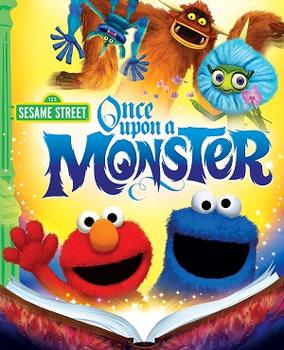
Sesame Street: Once Upon a Monster is a Sesame Street video game developed by Double Fine Productions and published by Warner Bros. Interactive Entertainment in conjunction with Sesame Workshop. The game was released in North America on October 11, 2011 for the Xbox 360 console. Players use the Kinect controller to control the Muppet characters Elmo and Cookie Monster and new characters Marco and Seamus as they sing and dance. Though Once Upon a Monster represents Double Fine's first foray into licensed property, the title started as one of four smaller titles, alongside Costume Quest, Stacking, and Iron Brigade, during an "Amnesia Fortnight" period during Brütal Legend, and was later found to be easily adapted to the Sesame Street property. The original prototype of the game, titled Happy Song, was released for Microsoft Windows as part of the Amnesia Fortnight 2012 bundle on November 19, 2012. Microsoft developed and released another Sesame Street game that used the Kinect sensor, Kinect Sesame Street TV, in 2012.

Iron Brigade, formerly titled Trenched, is a 2011 video game, developed by Double Fine Productions, published by Microsoft Studios as a downloadable Xbox Live Arcade title on the Xbox 360, and released for Microsoft Windows in 2012. Iron Brigade is a hybrid tower defense and third-person shooter game, set after World War I in an alternate reality, where the player controls units from the Mobile Trench Brigade to fight off robotic species called the Monovision. The player controls giant mecha-style robots with weapon and armor customization through a variety of missions set across the world. The game was released on the Xbox Live service on June 22, 2011, with a delayed release in certain European areas due to trademark issues with the title, with its release scheduled for November 30, 2011 but was ultimately released on December 1, 2011 under the alternate name Iron Brigade. The name of the title was updated worldwide to Iron Brigade alongside the European release.

Kinect Star Wars is a Star Wars video game developed by Terminal Reality and published by LucasArts and Microsoft Studios for the Xbox 360 that uses the Kinect motion peripheral. The game features four game modes: "Jedi Destiny", the primary game mode; podracing; Rancor Rampage; and Galactic Dance-off. In Jedi Destiny, players assume the role models of Jedi Padawans as they wield their lightsabers and use the Force to attack enemies mostly from the prequel trilogy using gestures. Podracing is a race-based game mode, Rancor Rampage is a destruction-based game mode, and Galactic Dance-off is a dance-based game mode similar to the Dance Central series.
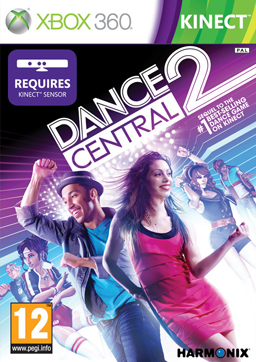
Dance Central 2 is a music rhythm game for the Xbox 360 Kinect and is the sequel to Dance Central. It is the second installment in the Dance Central series. It was released in October 25, 2011.

Double Fine Happy Action Theater is a casual video game developed by Double Fine Productions and distributed by Microsoft Game Studios. The title is a Kinect motion-sensing based title for the Xbox 360 and was released via the Xbox Live Arcade service in North America on February 1, 2012. Happy Action Theater is based on an idea that Double Fine's founder, Tim Schafer, had on devising a game that Lily, his two-year-old daughter, could play with. To this, the open-ended game is a collection of eighteen different modes that allow multiple players to interact in unique ways through the Kinect cameras and motion-sensing in an augmented reality shown on the console's display, such as playing in a giant virtual ball pit or walking through simulated lava.

Self-Defense Training Camp is a sports video game developed by British studio AMA Studios and published by Ubisoft for the Xbox 360, and was released in North America on November 8, 2011. The game was also released in the PAL region under the title My Self Defence Coach on November 10-11, 2011. The game utilizes the Kinect motion peripheral. Ubisoft claimed the game will "help players develop the self-confidence they need to react more efficiently when facing troublesome situations, and allows players to discover ways of protecting themselves from various forms of physical assault."

Goat Simulator 3 is an action video game and the sequel to Goat Simulator. The game was announced by Coffee Stain Studios during Summer Game Fest and was released on November 17, 2022. The game features a four-player cooperative mode, and it is set on the fictional island of San Angora. The game does not feature cross-platform multiplayer upon release.


















